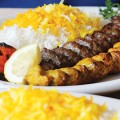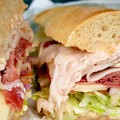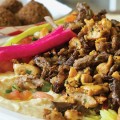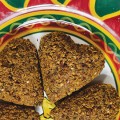Village Falafel has one of those nondescript names that reveal nothing about the cultural origin of the cuisine. It would be so easy for it to fall into the twilight zone of “Mediterranean food” or “Middle Eastern food” in the minds of South Bay diners. (Indeed, even the distinctions between those two phrases are so poorly understood in this country that they’ve maddeningly become interchangeable with “a falafel place.”)
That would be a huge mistake. The key to Village Falafel’s identity can be found tucked away in much smaller font on the sign outside its (also rather nondescript) location in Cupertino: “Armenian and Mediterranean Cuisine.”
More specifically, the food at Village Falafel is Lebanese-Armenian. The unconscionable Armenian genocide under the Ottoman Empire in World War I led to a diaspora that saw Armenians resettling all over the world. There was a large influx of Armenians into Lebanon, and there are many thriving Armenian communities there to this day.
Not surprisingly, considering its geographical spot at the crossroads of several cultures, Armenian cooking has incorporated traditions and flavors from all over through the centuries. But it has many proud culinary specialties of its own, and one of the things I love about the folks at Village Falafel is their genuine warmth and willingness to help a neophyte navigate them. Let’s face it, most non-Armenian visitors are not likely to have experienced Armenian food before, and there are plenty of menu items that they’re more familiar with (shawerma, falafel, hummus, etc.). And yet, after just a couple of minutes of peppering one of the chefs with questions about the ins and outs of certain dishes, he was making me a delicious labneh wrap—labneh is a thick strained yogurt, like a sublime version of cream cheese—that isn’t even on the menu. I’d recommend everyone request the same.
That friendliness, and the general family atmosphere at Village Falafel, is reflected in the number of regulars, both Armenian and non-Armenian, who frequent it. The vibe is quite casual, and takeout is easy, but there are reasons to sit down and stay a while, too. One is the plate of pita chips and hummus that they bring to each table to hold you over while you’re waiting for your food. Another is the dish of addictive spicy sauce at each table—why do Mediterranean places always have the tangiest and tastiest hot sauces? Portions are large and service very attentive. Lunch can get very busy, but dinner seems more relaxed, with loud mood music and a lot of interaction between diners and the kitchen.
Wraps ($12) are the easiest way to try out the Armenian meats. My favorite was the soujouk, a seasoned beef sausage that is almost like an Armenian chorizo, It’s subtle but smoky, with just a hint of cinnamon.
Armenians are known for some of the best basterma in the world. Basterma is air-dried cured beef and takes some getting used to because it’s very salty, but it grows on you. If basterma tastes a little like pastrami that’s because it is pastrami—at least, the two meats share a Yiddish root (pastromeh), and basterma is also called pastirma. The ma’aneh, on the other hand, is a beef sausage with more of a pepperoni taste and is much more instantly accessible for the non-Armenian eater.
Khorovats is the Armenian word for barbecued or grilled meats, and their skill with them is renowned. They are listed under the better-known category of “shish kebab” here, but in any language, they are amazing. The chicken shish kebab in particular is so tender and delicately spiced, with just enough of a charbroiled edge to add to the flavor, but not enough to distract from the essence of the meat.
The hummus is a bit tart for me, favoring lemon over tahini, but the baba ghannouj is remarkable, the absolute creamiest and brightest I’ve had. Village Falafel does a lot of impressive things with vegetables, in fact, including an eggplant wrap. Despite the many meats featured in Armenian cooking, there are a number of vegetarian options .
The obvious question for a place named Village Falafel is: How is the falafel? Flavor-wise, very good, but rather soft for me in terms of texture. I much prefer a crispy outer shell. I wish they had better fries, but I have to admit I’m still tempted to try the “french fry wrap,” made with pickles, cole slaw, ketchup and aioli.
Dessert should not be missed. It’s rare to say that about a Mediterranean place, especially with so much subpar baklava floating around, but it’s on a whole other level here. Moist and honey-drenched, it has an unusual rosewater finish. Even better is the kenafeh, a syrupy-sweet pastry of shredded phyllo.
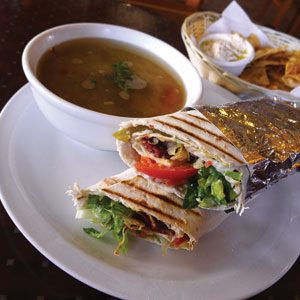
 Artist Profile: Ben Alexy
Artist Profile: Ben Alexy  Expensive City Buildings Sit Empty
Expensive City Buildings Sit Empty 